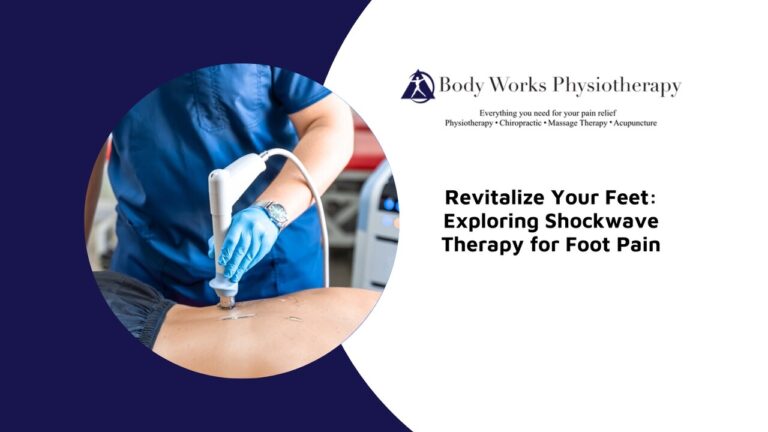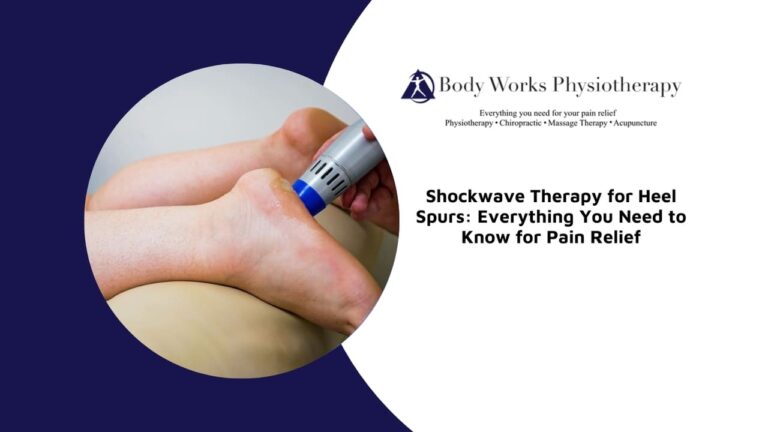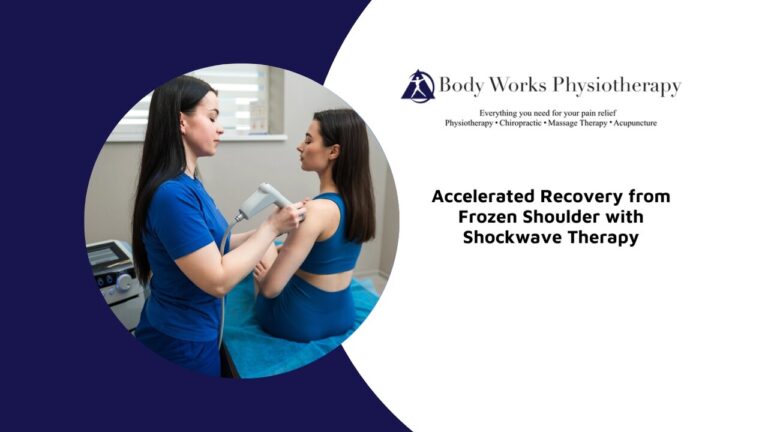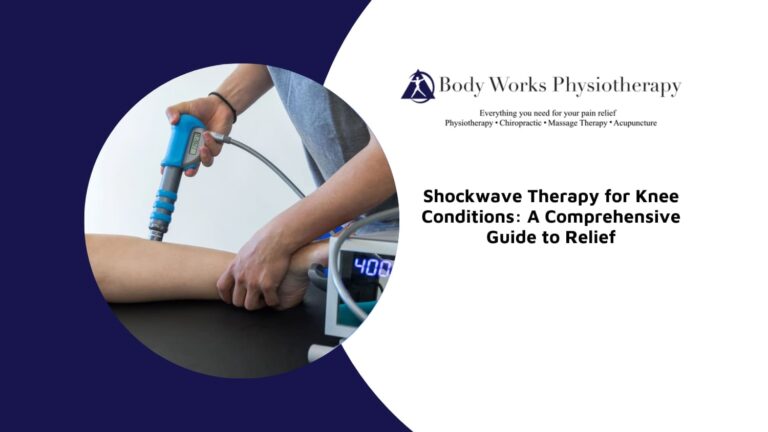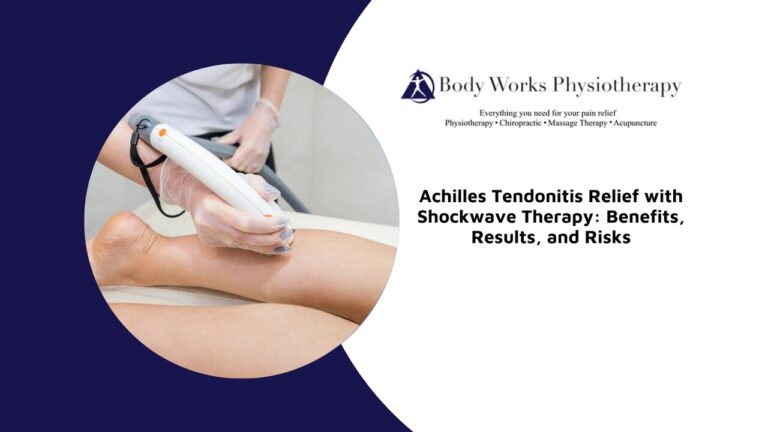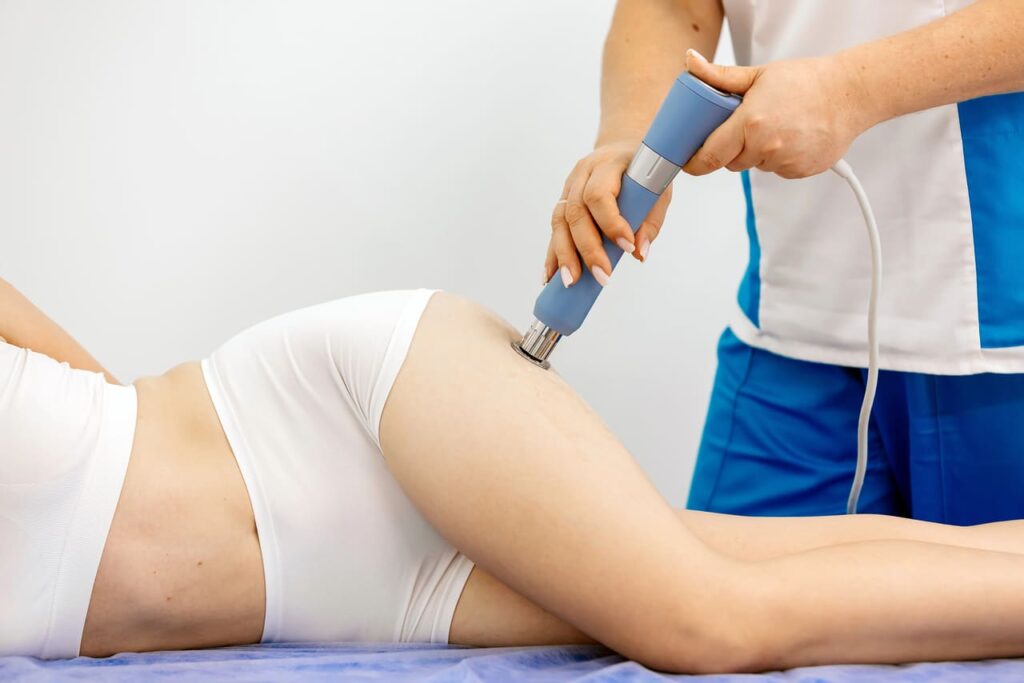
Scar tissue can limit mobility, cause discomfort, and slow recovery after surgery or injury. While it’s a natural part of healing, excessive or rigid scar tissue may interfere with daily life. Shockwave therapy offers a non-invasive way to break down this tissue and support healthy regeneration. In this blog, we’ll explain how shockwave therapy works for scar tissue, what types it can treat, and what to expect during treatment—so you can better understand whether it might be right for your recovery.
Shockwave Therapy Explained
Shockwave therapy is a non-invasive treatment that uses focused acoustic waves to stimulate the body’s natural healing processes. Originally developed to treat kidney stones and orthopedic conditions, this technique is now widely used in physiotherapy to break down scar tissue and improve soft tissue function.
The treatment involves the use of a handheld device that emits high-energy sound waves. When applied to the targeted area, these waves penetrate deep into the tissue, disrupting dense or fibrotic scar formations and promoting cellular repair. The process not only helps to break down tough scar tissue but also encourages better blood flow, collagen production, and tissue remodelling. As a result, people often experience reduced pain, increased flexibility, and improved mobility.
Shockwave therapy is particularly useful for individuals with scar tissue that is causing pain, stiffness, or limited movement—especially following surgery, injury, or repetitive strain.
Benefits of Shockwave Therapy for Scar Tissue
Shockwave therapy offers a range of therapeutic benefits for individuals with painful or restrictive scar tissue. These benefits stem from its ability to stimulate biological healing while physically disrupting dense or fibrous tissue structures:
- Breaks Down Fibrous Scar Tissue: High-energy sound waves target and disrupt dense scar tissue, helping to restore mobility and reduce discomfort in affected areas.
- Stimulates Blood Flow: Enhanced circulation brings oxygen and nutrients to damaged tissues, supporting faster and more complete healing.
- Increases Collagen Production: Shockwave therapy encourages the body to produce new collagen, improving tissue structure and flexibility over time.
- Softens Hardened Scar Tissue: Overly rigid or thickened scar tissue becomes more pliable, making it easier to move and stretch the affected area.
- Reduces Pain and Sensitivity: By relieving pressure on nerves and reducing tissue tension, this therapy helps alleviate chronic pain often associated with scars.
- Improves Flexibility and Range of Motion: As tissue becomes more elastic and less restrictive, people often regain mobility that was previously limited by scarring.
Whether you’re dealing with surgical scars, injury-related adhesions, or chronic scar tissue buildup, shockwave therapy provides a targeted and effective way to restore comfort and function.
Types of Scars That Can be Treated with Shockwave Therapy
Shockwave therapy is effective for treating both surface-level and deeper scar tissue, especially when it limits mobility or causes ongoing discomfort. Common types of scar tissue that respond well to this treatment include:
- Post-Surgical Scars: Scar tissue from orthopedic, abdominal, or cosmetic procedures can lead to stiffness and nerve irritation. Shockwave therapy helps break down dense tissue and restore mobility.
- Hypertrophic Scars: These raised, red scars develop from excess collagen and may cause itching or discomfort. Treatment helps soften fibrotic tissue and promotes healthier remodelling.
- Keloid Scars: Keloids extend beyond the original wound and can be difficult to treat. Shockwave therapy may reduce their thickness and ease related pain.
- Internal Adhesions: Often caused by injury or surgery, these internal scars can limit movement and cause tension. Shockwave therapy helps loosen adhesions and improve joint mobility.
- Traumatic Scar Tissue from Injuries: Scars from sprains, muscle tears, or impact injuries can restrict movement. This therapy enhances circulation and breaks down fibrous tissue to support healing.
- Scars That Limit Movement or Cause Pain: Any scar tissue that interferes with flexibility or causes discomfort may benefit, as shockwave therapy improves elasticity and function.
Shockwave Therapy Sessions for Scar Tissue Treatment: What to Expect
Shockwave therapy sessions are simple, efficient, and non-invasive. Here’s what you can typically expect:
- Application: A handheld device delivers acoustic waves directly to the area of scar tissue.
- Duration: Each session lasts about 15 to 30 minutes, depending on the size and depth of the affected tissue.
- Non-Invasive Procedure: No needles, incisions, or anesthesia are involved, making it a low-risk option for many.
- Pain Expectations: Some people report a tapping or pulsing sensation, with mild discomfort that is generally well tolerated.
- Downtime Expectations: You can resume normal activities immediately after the session, with no required recovery period.
- Therapist-Guided Care: Your physiotherapist will adjust intensity and frequency to ensure the most effective and comfortable experience.
Is Shockwave Therapy for Scar Tissue Safe: Risks and Possible Side Effects
Shockwave therapy is widely regarded as a safe treatment when delivered by a trained professional. Here are the key safety considerations:
- Mild Redness: Temporary skin redness may appear immediately after treatment and typically fades within hours.
- Localized Swelling: Some swelling is possible but usually resolves within a day or two as part of the normal healing process.
- Temporary Soreness: Mild tenderness or soreness in the treated area may occur, especially after early sessions.
- Occasional Bruising: In rare cases, minor bruising can develop if deeper tissue layers are involved.
A qualified therapist will evaluate your medical history and condition to confirm whether shockwave therapy is appropriate and safe for you.
How Many Shockwave Therapy Sessions Are Needed to Treat Scar Tissue?
The number of shockwave therapy sessions needed to treat scar tissue varies depending on the scar’s size, location, and severity. Most individuals require 3 to 6 sessions, spaced about 1 to 2 weeks apart. This timeline allows the body time to respond to treatment and begin healing between sessions.
Smaller or more recent scars may respond more quickly, while older or thicker scar tissue—such as post-surgical adhesions or deep internal scarring—often requires a longer course of care. Your physiotherapist will assess your condition and design a personalized treatment plan tailored to your needs. Progress will be monitored along the way, and adjustments can be made to ensure you get the best possible outcome.
When to Avoid Shockwave Therapy for Scar Tissue
While shockwave therapy can be highly effective for many individuals with painful or restrictive scar tissue, it may not be suitable for everyone. Certain medical conditions or health situations require extra caution or make this treatment inappropriate.
- Blood Clotting Disorders: Individuals with clotting issues or those taking blood thinners should avoid shockwave therapy unless cleared by a physician, as the treatment may increase the risk of bruising or bleeding.
- Active Infections or Open Wounds: The therapy should not be applied to areas with infections, skin ulcers, or open wounds, as it may worsen irritation or delay healing.
- Cancer in the Treatment Area: If there is a known or suspected malignancy in or near the scar tissue, shockwave therapy should be avoided to prevent unintended stimulation of abnormal cell growth.
- Pregnancy: Shockwave therapy is not recommended during pregnancy, especially near the abdominal or pelvic region, due to a lack of safety data for this population.
- Implanted Electronic Devices: Individuals with pacemakers or other electronic implants should consult a medical professional, as shockwave therapy near these devices may cause interference.
- Nerve or Circulatory Disorders: Conditions such as severe peripheral neuropathy or vascular disease may require an alternative treatment approach, as these conditions can affect how tissues respond to therapy.
A qualified healthcare provider should review your medical history to ensure shockwave therapy is appropriate for your condition and goals.
Recover Faster, Recover Better
If scar tissue is affecting your movement, causing pain, or slowing down your recovery, exploring treatment options like shockwave therapy could be a valuable step forward. With its non-invasive nature and potential for long-term relief, many people are finding success in regaining mobility and comfort through this modern approach.At Body Works Physiotherapy in Scarborough, our team is experienced in using shockwave therapy as part of personalized rehabilitation plans to help people overcome the limitations caused by scar tissue. Reach out today to schedule an assessment and learn if this treatment is right for your recovery goals.

